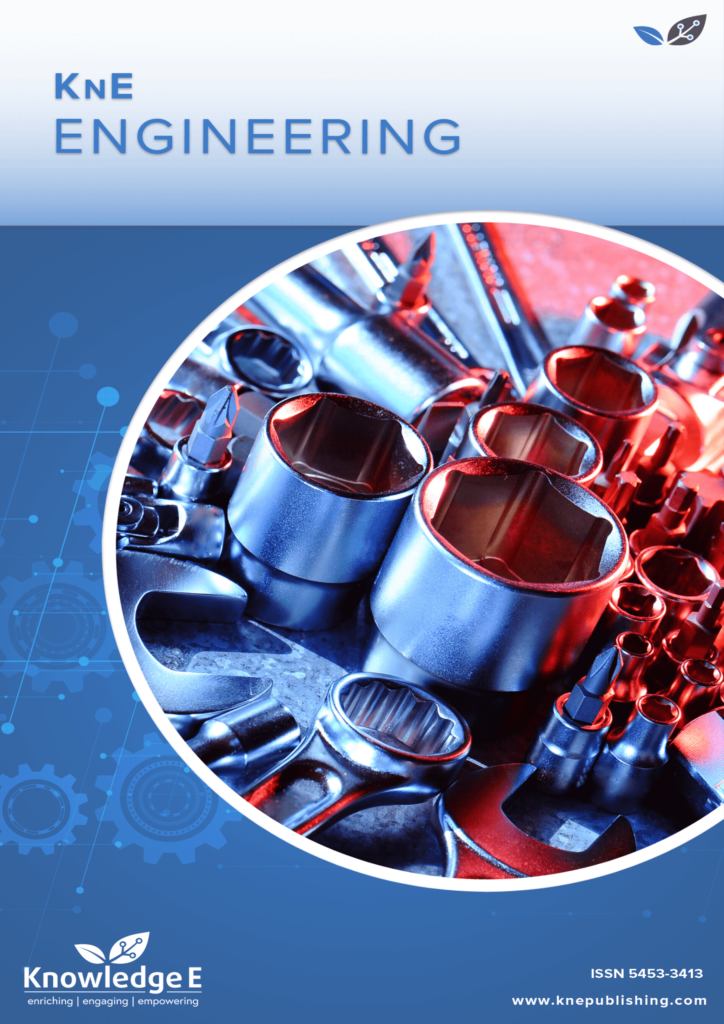
KnE Engineering
ISSN: 2518-6841
The latest conference proceedings on all fields of engineering.
The Effect of the Activator/Precursor Ratio on the Rheological Properties of the Alkali-activated Mining Waste Mud Paste
Published date:May 03 2020
Journal Title: KnE Engineering
Issue title: STARTCON19 - International Doctorate Students Conference + Lab Workshop in Civil Engineering
Pages:1–13
Authors:
Abstract:
To determine the properties of paste, mortar or concrete, it is necessary to understand its rheological behaviour first. This study discusses the effect of the activator/precursor ratio on the rheological properties of the alkali-activated paste. The pastes consisted of a mix of 70 % of tungsten mining waste mud, 15% waste glass and 15% of metakaolin. This mix was activated by combining sodium hydroxide and sodium silicate. Five activator/precursor (a/p) ratios were studied: 0.37, 0.38, 0.39, 0.40 and 0.41. The result obtained shows that the rheology of the pastes is affected by the activator/precursor ratio. The rheological behaviour of the paste fits the Bingham model. The yield stress (τ0) and plastic viscosity (μ) increase inversely with the activator/precursor ratio (e.g. a/p=0.37 gives τ0=84.19 and μ=0.4185; a/p=0.41 gives τ0=30.389 and μ=0.2937). The workability increases proportionally with the activator/precursor ratio (e.g. a/p=0.37 gives a slump=133 mm; a/p=0.41 gives a slump=158 mm). The compressive strength decreases when the activator/precursor ratio increases (e.g. at 28 days for a/p=0.37, the compressive strength was 19.6 MPa; for a/p=0.41, the compressive strength was 13 MPa). Finally, the ideal ratios were 0.38 and 0.39.
References:
[1] European Parliament, Council Directive 2013/59/Euratom of 5 December 2013 laying down basic safety standards for protection against the dangers arising from exposure to ionising radiation, and repealing Directives 89/618/Euratom, 90/641/Euratom, 96/29/Euratom, 97/43/Euratom a. Off J Eur Commun L13, (2014) 1–73. https://doi.org/doi:10.3000/19770677.L_2013.124.eng.
[2] M. C. Bignozzi, S. Manzi, M. E. Natali, W. D. A. Rickard, & A. Van Riessen, Room temperature alkali activation of fly ash: The effect of Na 2O/SiO2 ratio. Construction and Building Materials, 69 (2014) 262–270. https://doi.org/10.1016/j.conbuildmat.2014.07.062.
[3] R. B. V. Hardjito D., Wallah S. E. Sumajouw D.M.J., On the Development of Fly AshBased Geopolymer Concrete. ACI Materials Journal/November-December, (2004) 467–472.
[4] J. P. Castro-Gomes, A. P. Silva, R. P. Cano, J. Durán Suarez, & A. Albuquerque, Potential for reuse of tungsten mining waste-rock in technical-artistic value added products. Journal of Cleaner Production, 25 (2012) 34–41. https://doi.org/10.1016/j.jclepro.2011.11.064.
[5] G. H. Tattersall & P. F. G. Banfill, The rheology of fresh concrete (Pitman Advanced Publishing Program, 1983).
[6] R. Bhattacharjee & A. I. Laskar, Rheological behavior of fly ash based geopolymer concrete. 35th Conference on OUR WORLD IN CONCRETE & STRUCTURES, (2010).
[7] A. Poulesquen, F. Frizon, & D. Lambertin, Rheological behavior of alkali-activated metakaolin during geopolymerization. Cement-Based Materials for Nuclear Waste Storage, 357 (2011) 225–238. https: //doi.org/10.1007/978-1-4614-3445-0_20.
[8] M. Romagnoli, C. Leonelli, E. Kamse, & M. Lassinantti Gualtieri, Rheology of geopolymer by DOE approach. Construction and Building Materials, 36 (2012) 251–258. https://doi.org/10.1016/j. conbuildmat.2012.04.122.
[9] N. Cristelo, E. Soares, I. Rosa, T. Miranda, D. V. Oliveira, R. A. Silva, & A. Chaves, Rheological properties of alkaline activated fly ash used in jet grouting applications. Construction and Building Materials, 48 (2013) 925–933. https://doi.org/10.1016/j.conbuildmat.2013.07.063.
[10] A. Kashani, J. L. Provis, G. G. Qiao, & J. S. J. Van Deventer, The interrelationship between surface chemistry and rheology in alkali activated slag paste. Construction and Building Materials, 65 (2014) 583–591. https://doi.org/10.1016/j.conbuildmat.2014.04.127.
[11] A. Aboulayt, M. Riahi, S. Anis, M. O. Touhami, & R. Moussa, Rheological behavior of a fresh geopolymer based on metakaolin: effect of the introduction of calcium carbonate. International Journal of Innovation and Applied Studies, 7 (2014) 1170–1177.
[12] F. Puertas, C. Varga, & M. M. Alonso, Rheology of alkali-activated slag pastes. Effect of the nature and concentration of the activating solution. Cement and Concrete Composites, 53 (2014) 279–288. https://doi.org/10.1016/j.cemconcomp.2014.07.012.
[13] K. Vance, A. Dakhane, G. Sant, & N. Neithalath, Observations on the rheological response of alkali activated fly ash suspensions: the role of activator type and concentration. Rheologica Acta, 53 (2014) 843–855. https://doi.org/10.1007/s00397-014-0793-z.
[14] M. Torres-Carrasco, C. Rodríguez-Puertas, M. Del Mar Alonso, & F. Puertas, Alkali activated slag cements using waste glass as alternative activators. Rheological behaviour. Boletin de la Sociedad Espanola de Ceramica y Vidrio, 54 (2015) 45–57. https://doi.org/10.1016/j.bsecv.2015.03.004.
[15] P. A. Wedding & D. L. Kantro, Influence of Water-Reducing Admixtures on Properties of Cement Paste-A Miniature Slump Test. Cement Concrete and Aggregates, 2 (1980). https://doi.org/10.1520/CCA10190J.
[16] I. M. Krieger & T. J. Dougherty, A Mechanism for Non-Newtonian Flow in Suspensions of Rigid Spheres. Transactions of the Society of Rheology, 3 (1959) 137–152. https://doi.org/10.1122/1.548848.